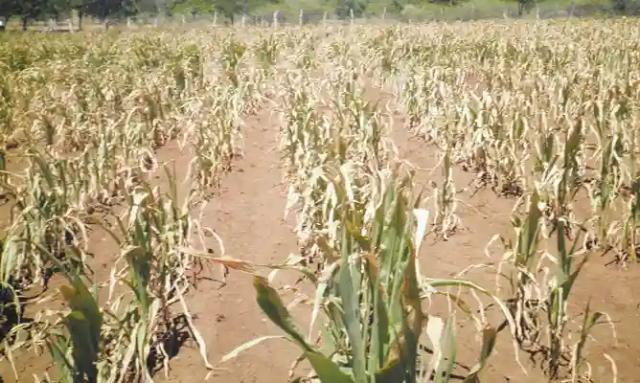Zimbabwe Expects Normal To Below-normal Rainfall: What Farmers Should Do

Experts predict that Zimbabwe is likely to experience normal to below-normal rainfall in the upcoming cropping season due to the El Niño phenomenon affecting Southern Africa. Farmers are advised to take early planting measures, opt for short-season maize varieties, and cultivate drought-resistant and early-maturing crops.
The El Niño phenomenon often brings delayed and erratic rains, negatively impacting crops and livestock. El Niño is a weather phenomenon characterised by the warming of the Pacific Ocean’s surface waters. It disrupts normal weather patterns, causing changes in rainfall, temperature, and ocean currents worldwide. It can lead to droughts, floods, and impacts on agriculture, ecosystems, and human lives.
What farmers should do:
According to Mr. Paul Zakariya, the executive director of the Zimbabwe Farmers Union (ZFU), it is important for farmers to have access to information about the El Niño phenomenon to plan effectively. He stated that Zimbabwe has experienced El Niño-induced droughts in the past, and it is crucial to learn from those experiences. The Sunday Mail quotes him as saying:
What we used in the past is what we should use, but if that did not work, we should try new things. In practice, we need to have weather information ready for the farmers, and that information should be area-specific so that farmers know exactly what time to plant in their area, what type of seeds they should plant in their area and the levels of rainfall.
Beyond that, we need to ensure, since it is not the first time, that we have started to prepare ourselves for mitigation, such as the utilisation of water bodies that we have to irrigate our crops and during long dry spells to supplement with irrigation.
HOT DEALS:
itel A70 - (128GB, 3GB RAM) $89,
itel A70 - (256GB, 4GB RAM) $99
itel P40 (128GB, 4GB), (6000mAh) $99
itel P40 (64GB, 4G), (6000mAh) $93
LATEST:
itel S24 (128GB) $124 (108MP camera)
itel S24 (256GB) $159 (108MP camera)
Cash on Delivery in Harare & Bulawayo. Tinotumira kwamuri inosvika.WhatsApp: 0783 450 793
He also said farmers should be informed about the availability of short-season crop varieties to adapt their farming practices. It is important to invest in irrigation infrastructure and encourage smallholder farmers to purchase portable irrigation equipment. This enables year-round production, ensuring food security and sustainability in agriculture.
According to agriculture expert Dr. Renneth Mano, when Zimbabwe has an 80 percent chance of experiencing El Niño-induced drought and crop failure, farmers should consider planting different crops than their usual choices. He also said:
– Farmers must avoid planting the same mix of grains and oilseeds in drought-prone seasons.
– Local varieties of sorghum and millet are more drought-tolerant than hybrid maize.
– Sunflower seeds and groundnuts are more resilient to drought than soybeans.
– Farmers should consider the risk of drought-induced crop failure when projecting profits per dollar spent on crops.
– Adding weather-indexed crop insurance to input loan agreements is recommended for dryland commercial farmers.
– Agricultural extension officers and banks can assist farmers in selecting suitable weather-indexed insurance policies.
– Climate-smart agriculture involves choosing the right crop mix for drought years and understanding which risks to bear and which to outsource to insurance companies.
According to Mr. Walter Rusike, a communal farmer in Mashonaland East province, many farmers in his area have been advised to adopt government-sponsored climate-proof agricultural practices like Pfumvudza/Intwasa. Additionally, some farmers are considering dry planting, which involves sowing seeds and waiting for rainfall.
Climate change has increased the frequency and severity of droughts, posing a threat to food security. To address this, Zimbabwe initiated a seven-year project worth US$47 million in 2020. With support from the Green Climate Fund and the United Nations Development Programme, the project aims to enhance climate resilience in vulnerable communities.





